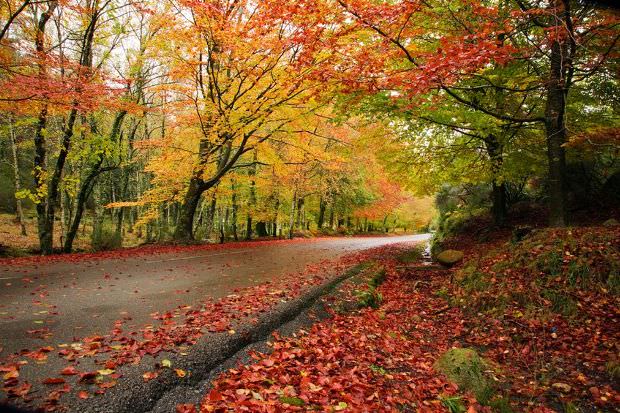 Fall is one of the most beautiful times of year, when nature begins transforming into brilliant shades of red, orange, and gold. Plus, the air is getting cooler and the sky is clear, with shorter days that allow the sun's rays to push through the trees at just the right angle, making an otherwise ordinary scene appear warm, calming, and maybe even somewhat magical.
Fall is one of the most beautiful times of year, when nature begins transforming into brilliant shades of red, orange, and gold. Plus, the air is getting cooler and the sky is clear, with shorter days that allow the sun's rays to push through the trees at just the right angle, making an otherwise ordinary scene appear warm, calming, and maybe even somewhat magical.
With everything that the season has to offer, it's no wonder that photographers enjoy heading out to take artistic, colorful images of the landscape. But to really capture the depth of the colors that surround you, keep the following tips in mind.
Look for the Right Lighting
Natural light is the ideal way to capture a fall landscape, but in order to get the right amount of light, you should head out during the early part of the day or wait until the evening. At these times, the sun will be coming in at an angle rather than being too bright and direct, which can actually strip color away.
If you're planning on heading out on an overcast day, you can enjoy all-day shooting because the lighting will be evenly distributed and soft. And because autumnal colors are saturated, they'll actually provide an aesthetically pleasing contrast to the plainness of an overcast sky.
After the Rain
Wait to head out after it has rained. The water will soak the landscape and all of the colors of the season will be more vibrant, especially if you can manage to time it out as the sun begins coming back out from behind the clouds. That burst of sunshine on the wet trees will bring out every color and make for stunning photographs.
Close-Ups with Backlighting
If you want to get some close-up images of leaves to mix things up, consider getting under a tree and shooting through them. If you can manage to position the leaves with the sun as your backlight, you'll even be able to capture the veins and details within them. And if the blue sky can be seen between the leaves, you'll also have some nice contrast.
Use a Polarizer
A polarizer is a great tool to have on hand for fall foliage and landscape shots, as it will further maximize the amount of color in the images you capture. You'll notice that blues are deeper, so the sky will really pop, and you'll also find that foliage colors are brighter. Plus, a polarizer will help reduce reflections and glare while shooting in very bright or sunny locations.
Getting Your Settings Right
Matrix metering is a method you can use to keep an eye on highlights and be certain that they aren't clipped, whether you're shooting on a brightly lit day or an overcast one. After you check your LCD, make appropriate adjustments to your exposure to either decrease or increase the saturation level.
Remember that overcast days mean you'll be working with less light. If you're trying to capture beautiful landscapes, though, avoid sacrificing depth of field by increasing your ISO rather than opening the aperture. And remember to use a high shutter speed if you're going to hold the camera with your hands. If, on the other hand, the weather is calm and you're planning on using a tripod, you can use a slower shutter speed.
Enjoy the Great Outdoors
Most of all, have fun and experiment while photographing nature in the fall. No matter what location you choose or how you choose to compose your photographs, be sure to take in the beauty of the natural world that surrounds you because it will only be around for a few short weeks, until next year.
For additional tips, resources, and support from a community of fellow professional photographers, sign up for Pt+. You'll gain access to a variety of photography lessons, read insights from the world's most talented photographers, be able to share your own photos, and more.

